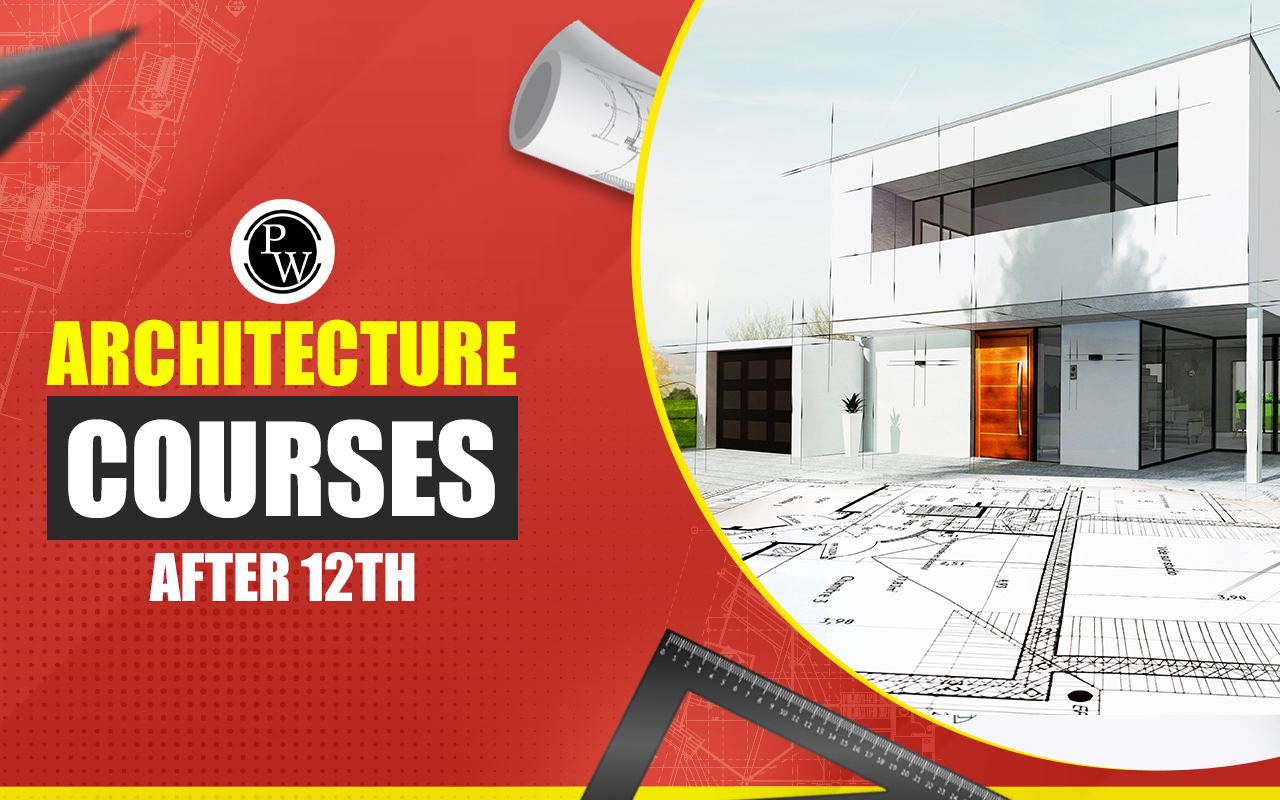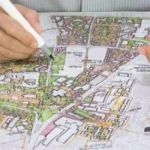Hey there! If you’re reading this, chances are you’ve got that little spark inside you – that curiosity about buildings, spaces, and how they shape our lives. Maybe you doodle floor plans in your notebook, or you stop to stare at interesting structures when you walk down the street. Well, let me tell you, that’s exactly where my story began. And trust me, choosing to study architecture was one of the wildest, most rewarding rides of my life.
I remember being a kid, absolutely fascinated by LEGOs. Not just building the sets, but taking them apart and creating my own sprawling cities. Later, it was watching documentaries about famous buildings or visiting old cathedrals, wondering how on earth someone came up with such grand ideas and then made them real. That feeling never left me. So, when it came time to pick a path after high school, architecture felt like the only choice that truly fit. It wasn’t just about drawing; it was about problem-solving, creativity, history, and a touch of magic.
But what is an architecture course really like? Is it all late nights and complicated math? Or is it a constant flow of brilliant ideas and beautiful sketches? Let me pull up a chair, and I’ll tell you all about it, from my own experience.
The First Steps: Diving into the Unknown
Walking into the architecture school for the first time felt like stepping into a whole new world. The air buzzed with a mix of excitement, nervous energy, and the faint smell of wood glue and fresh paper. I met my classmates – a bunch of equally wide-eyed individuals, some great at drawing, some with big ideas, all ready to figure this thing out together.
One of the biggest eye-openers was the "studio." This isn’t just a classroom; it’s your creative hub, your workspace, your second home for the next few years. Rows of drawing tables, pin-up boards covered in sketches, models in various stages of completion, and often, a lot of scattered coffee cups. The studio became where we learned, argued, collaborated, and sometimes, even slept a little (oops!). It’s a unique environment that quickly builds a strong sense of community. You learn to rely on your peers for feedback, help, and moral support during those inevitable all-nighters.
More Than Just Drawing: The Core Subjects You’ll Tackle
Before I started, I thought architecture was mostly about drawing pretty buildings. Boy, was I wrong! It’s so much more. The curriculum is incredibly diverse, designed to give you a complete picture of how buildings work, how they affect people, and how they fit into the bigger world.
1. Architectural Design Studio: The Heart of It All
This is it. This is where you actually design. Each semester, you’ll get a "brief" – a set of requirements for a project. It could be designing a small house, a community center, a museum, or even a whole urban block.
The process is never straightforward. You start with research, looking at the site, the people who will use it, and similar buildings. Then comes the sketching, endless sketching, trying to get your ideas out of your head and onto paper. You build physical models out of card, foam, or wood to test your ideas in 3D. You learn to use computer software (more on that later!).
The most crucial part? The "critiques" or "crits." You present your work to your professors and sometimes guest architects. They’ll ask tough questions, point out flaws, and push you to think deeper. It can be intimidating, but it’s where you learn the most, refining your ideas and understanding how to defend your design choices. It teaches you to think on your feet and to see your work from different perspectives.
2. History and Theory of Architecture: Understanding Where We Come From
You can’t build for the future if you don’t understand the past. We studied everything from the pyramids of ancient Egypt and the grandeur of Roman temples to the intricate details of Gothic cathedrals and the sleek lines of modern skyscrapers.
It wasn’t just memorizing dates and names. It was about understanding why certain styles emerged, how technology influenced building, and how societies used architecture to express their values. Learning about figures like Frank Lloyd Wright, Le Corbusier, or Zaha Hadid gives you a huge library of ideas and principles to draw from. It really broadens your view of what architecture can be.
3. Building Technology and Structures: How Things Stand Up
This is where the magic of how buildings actually stay up is revealed. You’ll learn about different materials – concrete, steel, wood, glass – and how they behave. You’ll get a basic understanding of structural principles: how beams, columns, and foundations work together to resist gravity and other forces.
Don’t worry, you don’t need to be a math genius, but a good grasp of physics helps. We learned about insulation, ventilation, plumbing, and electrical systems – all the things that make a building comfortable and functional. It’s about bridging the gap between a beautiful drawing and a safe, practical building.
4. Drawing and Representation: Speaking the Architect’s Language
While the hand sketch remains a fundamental tool for quickly exploring ideas, the world of architectural drawing has expanded massively. You’ll spend a lot of time learning:
- Technical Drawing: Precise plans, sections, and elevations that communicate every detail of your design.
- Perspective Drawing: Creating realistic 3D views.
- Computer-Aided Design (CAD) Software: Programs like AutoCAD for precise 2D drawings.
- 3D Modeling Software: Tools like SketchUp, Revit, or Rhino to build virtual models of your designs. This is incredibly powerful for visualizing and refining your projects.
- Rendering Software: Turning those 3D models into realistic images that show how your building will look in different lighting conditions.
It’s a steep learning curve, but mastering these tools is like learning a new language – the language of architecture – that allows you to communicate your ideas clearly and effectively.
5. Urban Planning and Theory: Designing for Cities and People
It’s not just about single buildings. Architecture courses also teach you about the bigger picture: how buildings fit into neighborhoods, cities, and even landscapes. We explored urban planning principles, looking at how to design public spaces, manage traffic, and create vibrant communities. We discussed theories about how people interact with their environment and how good design can improve quality of life. This part of the course really emphasizes the social responsibility of architects.
6. Sustainable Design: Building for a Better Tomorrow
This is a huge and increasingly important part of architecture today. We learned about designing buildings that are energy-efficient, use eco-friendly materials, and minimize their impact on the environment. From passive solar design to green roofs and rainwater harvesting, understanding sustainable practices is no longer an option – it’s a necessity for any aspiring architect.
The Ups and Downs: My Personal Hurdles and Triumphs
Let’s be real: an architecture course is tough. There were definitely moments when I wondered if I’d made the right choice.
The Challenges:
- Time Management: There’s always more to do than time allows. You learn to prioritize, but late nights and early mornings become pretty common, especially before a big deadline.
- Creative Blocks: Staring at a blank page, feeling completely out of ideas – it happens to everyone. Learning to push through these moments is part of the process.
- Demanding Professors: Critiques can be brutal. You put your heart and soul into a design, and sometimes it gets torn apart. But you quickly learn it’s not personal; it’s about pushing you to be better.
- Technical Difficulties: Software crashes, models falling apart, printers refusing to cooperate – these are the minor battles you fight regularly.
The Triumphs:
- The "Aha!" Moments: When a design finally clicks, when you solve a tricky problem, or when a professor praises an idea you’ve been working on for weeks – those moments are pure gold.
- Seeing Your Design Come to Life: Even if it’s just a detailed drawing or a perfect model, seeing your ideas take shape is incredibly satisfying.
- Learning New Skills: Mastering a new software, pulling off a complex model, or giving a confident presentation – these small victories build up your confidence.
- The Camaraderie: Sharing the highs and lows with your classmates creates an unbreakable bond. You celebrate successes and commiserate over failures together.
Beyond the Classroom: Real-World Connections
It wasn’t all just studio work. Our course also included:
- Site Visits: Going to actual construction sites, completed buildings, or urban areas gave us a practical understanding that you can’t get from a textbook.
- Guest Lectures: Hearing from practicing architects about their projects and experiences was always inspiring.
- Internships: Many courses encourage or require internships during breaks. My summer internship at a small firm gave me a peek into the day-to-day life of an architect and helped me apply what I’d learned in a professional setting.
- Building Your Portfolio: Every project you do, every model, every drawing, goes into your portfolio – your personal collection of work that showcases your skills and creativity to future employers. This is probably one of the most important things you’ll build during your studies.
What I Learned (Beyond Buildings)
Architecture school taught me so much more than just how to design a building. It shaped me in ways I never expected:
- Problem-Solving: Every design project is a complex puzzle. You learn to break down big problems into smaller, manageable parts and find creative solutions.
- Critical Thinking: You learn to question everything, to analyze, and to develop strong arguments for your ideas.
- Resilience: You get knocked down, your ideas get criticized, but you learn to pick yourself up, revise, and keep going.
- Communication: Presenting your ideas clearly, both visually and verbally, becomes second nature.
- Teamwork: Many projects involve collaboration, teaching you how to work effectively with others and leverage different strengths.
- Time Management: You become a master of juggling multiple tasks and meeting tight deadlines.
So, Is an Architecture Course for You?
Looking back, my architecture course was a wild, wonderful, and incredibly challenging ride. It demanded a lot, but it gave back even more. It wasn’t just about learning a profession; it was about learning a way of thinking, a way of seeing the world around me.
If you’re thinking about studying architecture, my best advice is this:
- Be Passionate: You need that inner drive. The long hours and tough critiques are easier to handle when you genuinely love what you’re doing.
- Be Curious: Ask questions, explore different ideas, look at the world with an open mind.
- Be Ready to Work Hard: It’s not a walk in the park, but the effort you put in directly correlates to what you get out of it.
- Embrace the Process: It’s not just about the final design; it’s about the journey of discovery, experimentation, and refinement.
- Don’t Be Afraid to Fail: You’ll make mistakes, and that’s okay. It’s how you learn and grow.
An architecture course will push you, inspire you, and sometimes frustrate you, but it will ultimately equip you with a unique skill set and a perspective that allows you to shape the physical world. It’s a path that combines art, science, and human understanding, and for someone like me, who always looked at buildings with wonder, it was the perfect adventure.
Who knows? Maybe soon, you’ll be telling your own story about your journey into angles and ideas. And if you do, I bet it will be just as amazing.



